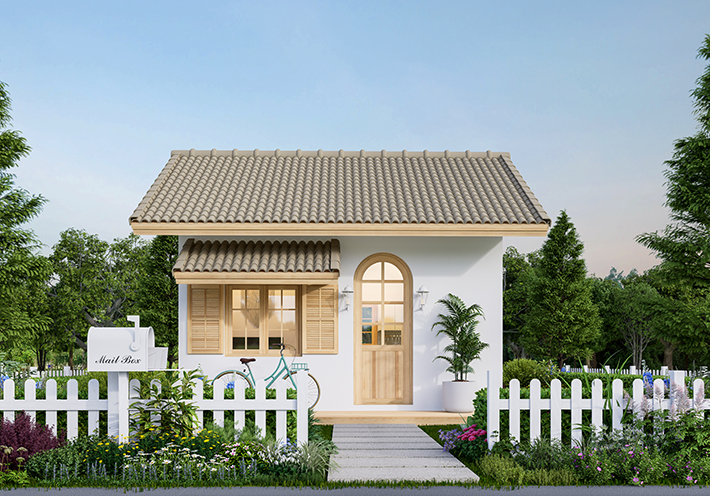
Tiny Houses: Big Developments in Small Spaces
Bigger is not always better. With the ability to age in place, bring your home with you, and secure a more affordable housing alternative, tiny houses are an attractive housing option for many.
At this time, there is not a universal definition or size of a tiny house, though they are typically 400 square feet or less, and are making a big impact on the housing market, which is why the subcommittee on tiny houses (E06.26), part of the committee on performance of buildings (E06), is working to develop new standards to create uniformity in the tiny house industry so they can become recognized as a viable housing solution.
Tiny House, Big Impact
Tiny houses have been around for decades – from Mongolian yurts to Native American teepees to Thoreau’s 150-square-foot cabin in the woods where he wrote Walden. However, it was during the Great Recession around 2008 when the tiny house movement really took off.
Since then, they have become an attractive way of life for individuals from all walks of life. A snapshot of those calling a tiny houses “home” includes:
- 40% of tiny house owners are over the age of 50; individuals between 30 and 50 make up another 40%; individuals younger than 30 account for 20%.
- Young couples and singles choose tiny houses because of their affordability; older adults are looking to downsize.
- Those seeking a minimalist lifestyle and eco-friendly housing option also favor tiny houses.
Less House Equals More Savings
When it comes to tiny houses, the saying “less is more” sums it up nicely – as less square footage leads to more savings. Tiny houses also equal lower utility costs and higher conserved energy, which means less carbon output is created. With a lower output, homeowners can live a more sustainable and eco-friendlier lifestyle.
But when it comes to tiny houses, the options are only limited by one’s imagination. Some unofficial types of these houses are as follows:
1) Tiny houses on wheels: Are structures built for commercial purposes or to be lived in as a dwelling constructed on a movable trailer, providing owners the freedom to travel and experience the open road-with the home in tow and are considered personal property.
2) Tiny houses on skids: Are structures built on a temporary foundation and are relocatable
3) Tiny houses on a foundation: A tiny house is built on site or off-site in a factory that is placed on a permanent foundation and is considered real property and the homeowner will be able to obtain a mortgage and build equity like a traditionally sized home.
Tiny house designs have evolved beyond the tiny box and come in a variety of styles, including granny pods, shipping containers, cabins, houseboats, and more.
Tiny House Standards
A primary focus of the subcommittee is standards for tiny houses on wheels. Because there is not one unified industry standard that is recognized for tiny houses on wheels, each jurisdiction, bank, insurance agency, etc., could have a different definition and criteria to deny or allow them.
Currently, most tiny houses on wheels, also known as caravans, are built to recreational vehicle standards, which are built for temporary use and are not classified as housing. This has also created barriers to financing and zoning.
The tiny houses subcommittee is currently developing seven proposed standards:
- Developing microgrid standards to enable the interconnection of utilities to both single tiny houses and tiny home communities (WK85884)
- Standard terminology of tiny houses (WK84336)
- Building a working tiny house community (WK85722)
- Tiny houses on wheels (WK85863)
- Tiny house structure attachment, flooring, chassis, and anchoring systems (WK88336)
- Tiny house foundations (WK85721)
- Designing and building tiny houses and ADUs to age in place ( WK92800)
According to Janet Thome, tiny houses subcommittee membership secretary and president of Tiny House Alliance USA, tiny houses offer a multitude of benefits, such as the opportunity to age in place, be mobile, and are more affordable. She also believes tiny houses have the potential to make a positive impact on the housing crisis.
Tiny houses are proof that good things do come in small packages. ASTM standards are helping to ensure that these tight, efficient living spaces offer homeowners the biggest bang for their buck and the chance to live the lifestyle they choose.
A recent conference sponsored by the Office of Housing and Urban Development titled "Availability of Affordable Housing: A Journey Across the U.S. and Through Innovative Policies" was held in September of 2024. Thome spoke on the committee's standards work and the implications for the future of the field.
Regan Daley is a communications intern with ASTM International.
 SN Home
SN Home Archive
Archive Advertisers
Advertisers Masthead
Masthead RateCard
RateCard Subscribe
Subscribe Email Editor
Email Editor